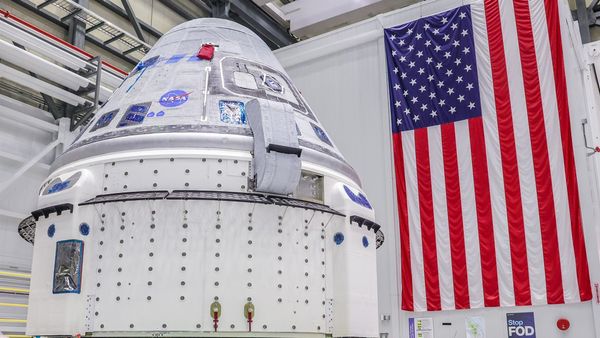
There was the Big Bang, that cataclysmic moment when our universe was born. Then a few hundred million years passed. That might seem like a long time. But when you consider that last week marked nearly 14 billion years since the Big Bang, 500 million years, say, is a small slice.
A comparison might help drive that point home: if you compressed those 14 billion years into a 24-hour day that started at midnight tonight, 500 million years would take up about 50 minutes. We’d be at 12:50am: still the dead of night, long before the break of dawn. I mention “dawn" quite deliberately here. Astronomers have long wondered when what they commonly call the “Cosmic Dawn" happened—the time when there first was light in the universe. Well, there probably was a vast burst of light with the Big Bang. But after that, there was darkness for many million years, before the first luminous objects formed—the earliest stars, then galaxies. That’s the cosmic dawn.
So when was it? Astronomers think that this epoch started about 300,000 years after the Big Bang, and continued for about 400 million years. By then, the first galaxies had formed and had started emitting light. Astonishing as it may seem, we can observe some of that same light today. To understand that, think of observing a galaxy that’s a billion light years away. What that really means is that the light from there that’s reaching our curious eyes today left that galaxy a billion years ago. So it is at least that old. Thus, the further away a celestial object is, the older it is, and the most distant ones that we have observed are over 13 billion years old. In looking at them, we are actually looking that far back in time. We are looking at objects as they existed during that cosmic dawn.
But it’s worth remembering that these objects are also particularly hard to observe. Because they are extremely far away, the light from them is extremely faint. Much of it is dispersed and lost as it makes its way through everything—dust, other stars and galaxies, black holes—that lies between the objects and us. So direct observation of these proto-stars and -galaxies is difficult. This is why astronomers must look for other ways to detect these shiny things. One such detection tool is an understanding of what happened to the gas hydrogen in those early years of the universe. Hydrogen was everywhere at the time—widely and pretty uniformly distributed throughout the universe. It was also electrically neutral. Never mind what that means, except to note that is the natural state of the gas. A YouTube clip that explains this describes the universe at the time as “dark, cold, a tenuous and unlit gas of mostly hydrogen".
But then stars and galaxies began forming. Astronomers suggest that the light they emitted “excited" the hydrogen, meaning the gas absorbed the radiation. This changed the fundamental character of hydrogen atoms so they were no longer neutral. They were “ionized". Crucially, this would allow the hydrogen to be “seen" by present-day observers, at least in the form of spectroscopic patterns at specific radio frequencies. These are characteristic of hydrogen in this state.
At least, that’s the broad theory, in simple terms. It tells us that if we find those particular spectroscopic patterns, that’s evidence of the formation and existence of the early stars, and thus of the elusive cosmic dawn. So astronomers have been searching for the so-called “spin-flip signal", spectroscopic lines at a wavelength of 21cm. That happens because the hydrogen atom reacts to being excited by emitting a photon at that wavelength. That, if they find it, is the certain giveaway of the existence of this particular avatar of hydrogen. But finding it is no easy task either. The same YouTube clip says it’s akin to detecting the flap of a hummingbird’s wings inside the chaos and cacophony of a hurricane. But a few years ago, some scientists at Massachusetts Institute of Technology installed a relatively small but extraordinarily sensitive radio antenna in the West Australian desert and set it to listen to the sky.
Result: They found something. They had to sift carefully through overlapping noise and other radio signals. They had to rule out other possible explanations for what the antenna had detected. But finally, in a paper they published in the journal Nature, they remarked that what they had found was “largely consistent with expectations for the 21-centimetre signal induced by early stars". They had, in fact, stumbled upon the cosmic dawn. They dated it to about 180 million years after the Big Bang. “In terms of a direct detection of a signal from the hydrogen gas itself," one of the astronomers said, “this has got to be the earliest".
Naturally, the results caused a stir in astronomical circles. Other researchers scrambled to do what science calls for after new findings are published: seek to replicate and expand on them. Various large radio telescopes around the world were put to work trying to detect the spin-flip signal. If this was a first glimpse of the cosmic dawn, other teams of astronomers hoped to fill in the details and eventually understand just how the universe evolved, post-Big Bang. There is, however, a twist in the tail—which is also how science sometimes progresses. Nobody since Bowman et al has yet been able to detect that 21 cm signal.
In particular, a team of scientists from India’s Raman Research Institute tried to replicate Bowman’s experiment. Instead of the Australian desert, they floated their antenna on a “raft made of styrofoam" in a “large body of water ... in Southern India". They chose the lake carefully, even taking into account its depth and salinity, so that the water would shield the antenna from some kinds of radiation. They didn’t find what Bowman did (An absorption profile centred at 78 megahertz in the sky-averaged spectrum, Judd D. Bowman and others, Nature, 1 March 2018). Thus they suggest that Bowman’s findings were “not of astrophysical origin". Maybe Bowman’s equipment was faulty, or there were errors in their reported data. What’s more, “Inhomogeneous ground beneath the antenna ... has been suggested as an origin for systematic errors". That is, the terrain in Australia did not offer enough protection from noise and irrelevant data. Of course that’s why the Indian scientists chose to float their antenna on water.
Sure, the Indians didn’t find the signal they were looking for. Nevertheless, they remain optimistic, both about their methods and the ultimate goal: “continued observations with sensors deployed [on] large water bodies in remote locales on earth ... would provide data free from systematics and lead to discovery of the true redshifted 21-cm signal from cosmic dawn".
But for the time being, “our non-detection bears out earlier concerns and suggests that the profile found by Bowman et al is not evidence for new astrophysics or non-standard cosmology". Which is also why several other teams are, in spite of the Indians’ findings, still carrying out their own experiments. All in search of dawn.
Once a computer scientist, Dilip D’Souza now lives in Mumbai and writes for his dinners. His Twitter handle is @DeathEndsFun.







